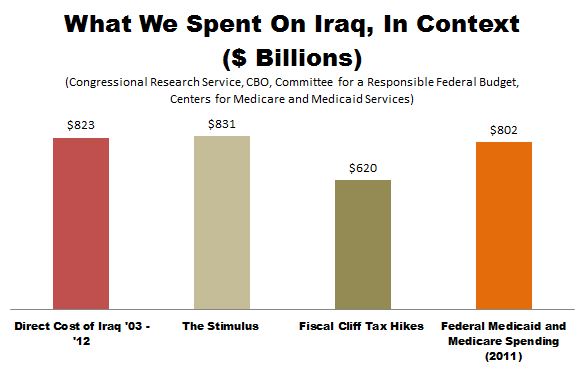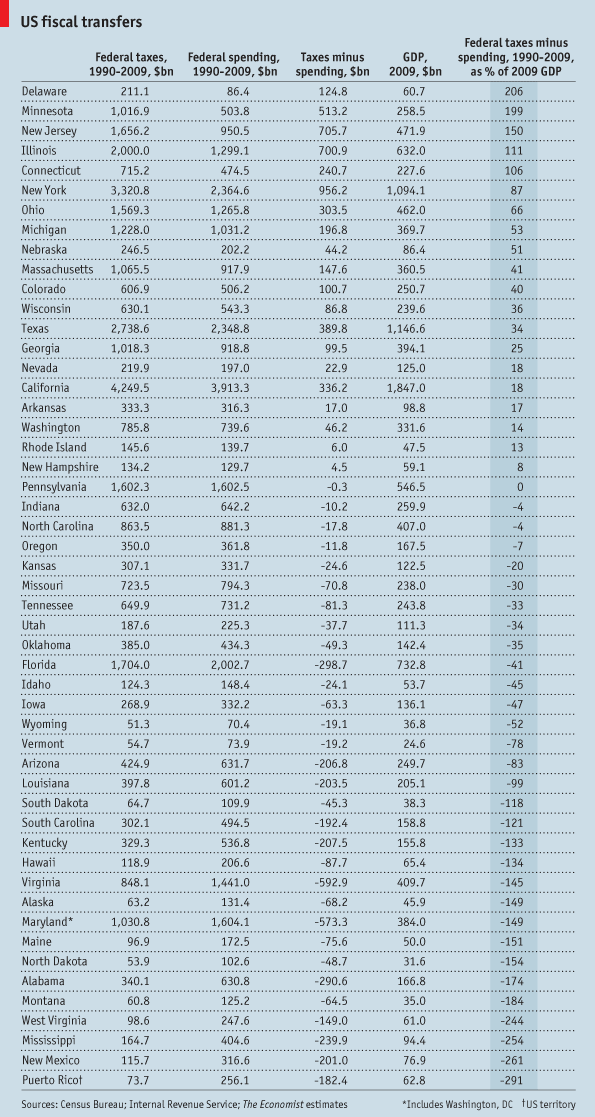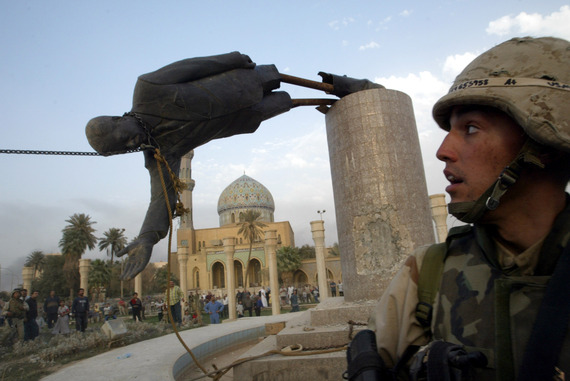An $800 Billion War: The Immense Cost of Invading Iraq, in Charts
What else could that money have paid for? A year of federal healthcare spending, the stimulus, or the cost of the fiscal cliff tax hikes, just to name a few things.
As James Fallows recounted earlier this week, there was precious little discussion of what the financial cost of invading and occupying Iraq might ultimately be during the lead-up to war. Bush administration officials mostly treated it as a inconsequential, unknowable detail. The president's chief economic adviser was given the ax after having the temerity to suggest the price tag might reach $200 billion. Some suggested a liberated Iraq would pay for it own reconstruction with oil revenue.
Nope. The direct cost of operations ultimately tallied about $823 billion, by the time the Congressional Research Service broke it down in March 2011 (the figures include a budget request for fiscal year 2012). The graph below, which I've borrowed and reformatted from Econbrowser's Menzie Chinn, shows how that cost escalated over time.

This is probably the most conservative way to think about what we spent on the war. For instance, it doesn't account for the hundreds of billions of dollars we will likely spend on future veteran care or its contribution to future interest payments we'll be making on the debt. Rather, it's just the cost of military operations, reconstruction, diplomacy, and additional medical funding for the Veterans Administration.
But what's $823 billion, really? Well, enough to pay for an entire year of federal Medicare and Medicaid spending as of 2011. It's more than all of the tax hikes included in the fiscal cliff deal will raise in ten years. And it's just a shade under the full-decade cost of the stimulus, according to 2012 CBO estimate. It's also more money than the $757 billion Paul Ryan's budget would save by cutting Medicaid spending.


One can try to argue that toppling Saddam was worth the cost in lives and in money. But now that we've entered the age of fiscal austerity, we need to remember for the future: there is no such thing as waging a war of occupation on the cheap.
